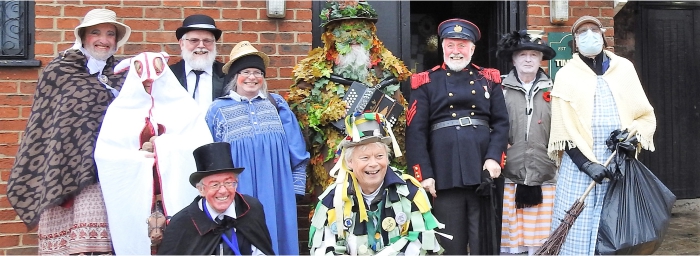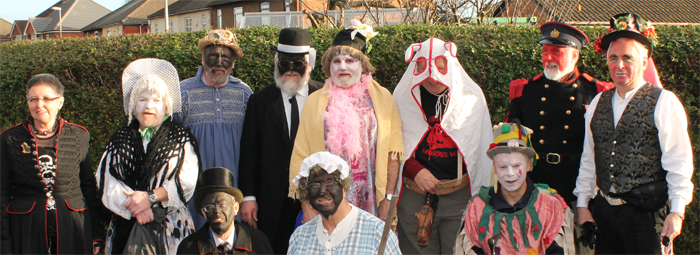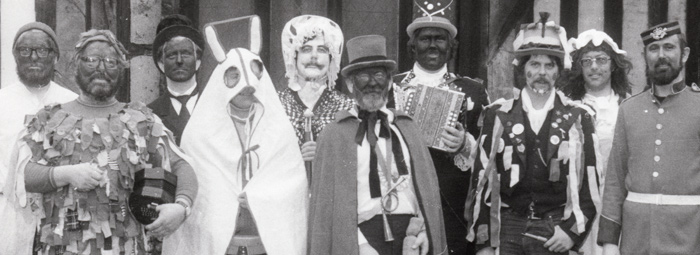The Hobby Horse in Lincolnshire
The Hobby Horse in Lincolnshire
By Rob Guest
Hobby horses are costumed animal characters that feature in some traditional seasonal customs and processions throughout Europe. In England they are particularly associated with Mummers' plays and the Morris dance.
The types most frequently found in England are:
1. Tourney horses look like a person riding a small horse that is wearing a long coat. A circular or oval frame is suspended around the waist with a skirt draped over it hanging down to the ground. The frame has a carved wooden head, often with snapping jaws (operated by pulling a string) and a tail. The 'rider' may wear a cape or other flowing costume to help cover the frame. In the most elaborate versions, fake legs meant to be those of the rider, hang down the sides of the skirt. Found throughout England.
2. Mast horses are meant to represent the horse (or other animal) itself. They have a head made of wood, or sometimes an actual horse's skull is used; it usually has hinged jaws that can be made to snap. The head is attached to a stick about 1m (3ft) long. The person acting the creature is covered by a cloth attached to the back of its head. Common in Kent.
3. Sieve horses are similar to tourney horses. Known only from North Lincolnshire, they are made from a farm sieve frame, with head and tail attached, suspended from the performer's shoulders. The performer wears a light horse blanket modified to include a headpiece with holes for the eyes and featuring prominent ears. The blanket covers the performer and the sieve so that he appears to be a horse riding a horse – he even used to carry a whip!
The Lincolnshire horses were usually associated with mummers' plays. These were performed on or around Plough Monday in early January, by teams known variously as Plough Stots, Plough Jags or Plough Jacks. The performers were usually farm labourers and this was a way of them earning a little extra money. Teams of elaborately costumed actors paraded through the villages and surrounding houses, performing their traditional play. They often took with them a plough (hence the name) with the threat that if the audience didn't reward the performance then their lawn would be ploughed up!
There are a number of photographs in the archives of the North Lincolnshire museum in Scunthorpe which show the players and their unique hobby horses. In common with a number of other rural activities, the tradition largely died out about the time of the First World War. However, enough actors remembered the words for the custom to be subsequently revived.
Barrow-on-Humber, for example, revived their play for the Festival of Britain in 1951 and the Coleby Plough Jad started performing in 1973 (see www.colebyploughjag.com).
You can see a Lincolnshire hobby horse in Scunthorpe museum created as part of the revival in 1953 in Burringham. And you can still see the Coleby Plough Jag performed each year on the Saturday before Plough Monday and admire the hobby horse which is unique to this part of the world.




